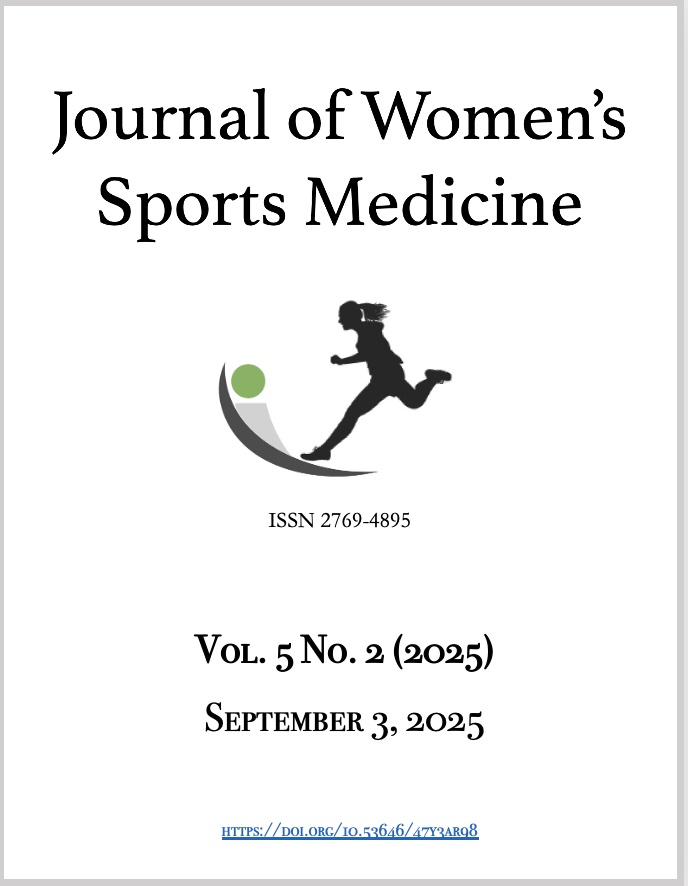Beyond "Users" and "Non-Users": Insights from a Murine Model of Oral Contraceptive Formulations
DOI:
https://doi.org/10.53646/3a34ee04Keywords:
female athlete, oral contraceptives, hormones, injuryAbstract
Oral contraceptive pills (OCP) are a commonly prescribed medication in the United States and worldwide for female individuals in the athletic and general populations. Research often compares female participants as oral contraceptive pill “users” or “non-users.” However, there are distinct types of oral contraceptives with differences in synthetic hormones and doses. The heterogeneity in hormone type and dosage composition represents a critical variable when investigating the impact of oral contraceptive pills on musculoskeletal health and athletic performance. Many athletes are opting to use OCPs to manipulate their menstrual cycles in coordination with training and competition schedules. Just as it is important to understand how different OCPs affect menstrual patterns to guide individualized prescribing, so too should we strive to understand their musculoskeletal effects. Improved knowledge in this area will allow clinicians to optimize OCP prescription to further support musculoskeletal health and performance.
References
1. Rau OR HA, Cheng J, Wimberly AC, Carballo CB, Rodeo SA, Casey EK. Mouse model for combined oral contraceptive administration in diet. J Womens Sp Med, Sept 2025.
2. Contraceptive Use [Internet]. U.S. Centers for Disease Control and Prevention. 2023 [cited November 6, 2024]. Available from: https://www.cdc.gov/nchs/fastats/ contraceptive.htm#print.
3. Nations U. Contraceptive Use by Method 2019: United Nations; 2019.
4. Burrows M, Peters CE. The influence of oral contraceptives on athletic performance in female athletes. Sports medicine (Auckland, NZ). 2007;37(7):557-74.
5. Martin D, Sale C, Cooper SB, Elliott-Sale KJ. Period Prevalence and Perceived Side Effects of Hormonal Contraceptive Use and the Menstrual Cycle in Elite Athletes. International journal of sports physiology and performance. 2018;13(7):926-32.
6. Darney PD. The androgenicity of progestins. The American journal of medicine. 1995;98(1a):104s-10s.
7. Bick AJ, Louw-du Toit R, Skosana SB, Africander D, Hapgood JP. Pharmacokinetics, metabolism and serum concentrations of progestins used in contraception. Pharmacol Ther. 2021;222:107789.
8. Lin CY, Casey E, Herman DC, Katz N, Tenforde AS. Sex Differences in Common Sports Injuries. Pm r. 2018;10(10):1073-82.
9. Herzberg SD, Motu'apuaka ML, Lambert W, Fu R, Brady J, Guise JM. The Effect of Menstrual Cycle and Contraceptives on ACL Injuries and Laxity: A Systematic Review and Meta-analysis. Orthop J Sports Med. 2017;5(7):2325967117718781.
10. Reif A, Wessner B, Haider P, Tschan H, Triska C. Strength Performance Across the Oral Contraceptive Cycle of Team Sport Athletes: A Cross-Sectional Study. Front Physiol. 2021;12:658994.
11. Ajayi AF, Akhigbe RE. Staging of the estrous cycle and induction of estrus in experimental rodents: an update. Fertil Res Pract. 2020;6:5.
Downloads
Published
Issue
Section
License
Copyright (c) 2025 Journal of Women's Sports Medicine

This work is licensed under a Creative Commons Attribution-NonCommercial-NoDerivatives 4.0 International License.

